Balkinization
an unanticipated consequence of
Jack M. Balkin
Balkinization Symposiums: A Continuing List
E-mail:
Jack Balkin:
jackbalkin at yahoo.com
Bruce Ackerman
bruce.ackerman at yale.edu
Ian Ayres
ian.ayres at yale.edu
Corey Brettschneider
corey_brettschneider at brown.edu
Mary Dudziak
mary.l.dudziak at emory.edu
Joey Fishkin
joey.fishkin at gmail.com
Heather Gerken heather.gerken at yale.edu
Abbe Gluck abbe.gluck at yale.edu
Mark Graber
mgraber at law.umaryland.edu
Stephen Griffin
sgriffin at tulane.edu
Jonathan Hafetz
jonathan.hafetz at shu.edu
Jeremy Kessler
jkessler at law.columbia.edu
Andrew Koppelman
akoppelman at law.northwestern.edu
Marty Lederman
msl46 at law.georgetown.edu
Sanford Levinson
slevinson at law.utexas.edu
David Luban
david.luban at gmail.com
Gerard Magliocca
gmaglioc at iupui.edu
Jason Mazzone
mazzonej at illinois.edu
Linda McClain
lmcclain at bu.edu
John Mikhail
mikhail at law.georgetown.edu
Frank Pasquale
pasquale.frank at gmail.com
Nate Persily
npersily at gmail.com
Michael Stokes Paulsen
michaelstokespaulsen at gmail.com
Deborah Pearlstein
dpearlst at yu.edu
Rick Pildes
rick.pildes at nyu.edu
David Pozen
dpozen at law.columbia.edu
Richard Primus
raprimus at umich.edu
K. Sabeel Rahmansabeel.rahman at brooklaw.edu
Alice Ristroph
alice.ristroph at shu.edu
Neil Siegel
siegel at law.duke.edu
David Super
david.super at law.georgetown.edu
Brian Tamanaha
btamanaha at wulaw.wustl.edu
Nelson Tebbe
nelson.tebbe at brooklaw.edu
Mark Tushnet
mtushnet at law.harvard.edu
Adam Winkler
winkler at ucla.edu
Compendium of posts on Hobby Lobby and related cases
The Anti-Torture Memos: Balkinization Posts on Torture, Interrogation, Detention, War Powers, and OLC
The Anti-Torture Memos (arranged by topic)
Recent Posts
Desire in the Absence of Discrimination
Just A Few Blogs
ACS Blog
Alas, a Blog
Althouse
Arts and Letters Daily
Atrios (Eschaton)
Bill of Health
Buzzflash.com
Buzz Machine
Cato at Liberty
Juan Cole (Informed Comment)
Concurring Opinions
The Constitution in 2020
Corrente
Crooked Timber
Daily Howler
Daily Kos
Dana Boyd
Brad DeLong
Digby (Hullabaloo)
Discriminations
Daniel Drezner
Kevin Drum (Mother Jones)
Electrolite
En Banc
Eunomia (Daniel Larison)
Fafblog
Michael Froomkin (Discourse.net)
GovLab (Beth Noveck)
Rick Hasen (Election Law)
History News Network
How Appealing
Ignatz (Sam Heldman)
The Importance of (Ernie Miller)
Infolaw
Instapundit
International Economic Law and Policy Blog
IntLawGrrls
Jacob Levy
Jesus' General
Jurisdynamics
The Kitchen Cabinet
Mark Kleiman
Law Blog Central
Larry Lessig
Lawyers, Guns and Money
Liberal Oasis
Brian Leiter's Law School Reports
The Leiter Reports
Marginal Revolution
Megan McArdle
Memeorandum
Metafilter
Mirror of Justice
The New Republic
Newseum
No More Mister Nice Blog
Brendan Nyhan
Opinio Juris
Orcinus
The Originalism Blog
Pandagon
Passport (Foreign Policy)
Overcoming Bias
Political Animal (Washington Monthly)
Political Theory Daily Review
Political Wire (Taegan Goddard)
The Poor Man
Virginia Postrel
Prawfsblawg
Public Reason
Jonathan Rauch
Raw Story
Redstate
ReligiousLeftLaw.com
Reporters Committee For Freedom of the Press
Reproductive Rights Blog
Rothman's Roadmap to the Right of Publicity
SCOTUS Blog
Seeing the Forest
Clay Shirky
The Shifted Librarian
The Situationist
Larry Solum (Legal Theory)
Andrew Sullivan
Talking Points Memo
Talk Left
Tapped
Tbogg
TechPresident
The Paper Chase (Jurist)
Tom Paine
Tom Tomorrow (This Modern World)
Eve Tushnet
Uggabugga
University of Chicago Law School Faculty Blog
Unqualified Offerings
The Volokh Conspiracy
War and Piece (Laura Rozen)
Wampum
Oliver Willis
Wonkette
Written Description
Matthew Yglesias
Yin
Your Choice of Feeds
1. XML
powered by
2. Atom Feed
3. RSS 2.0
Desire in the Absence of Discrimination
Guest Blogger
For the Balkinization Symposium on Solangel Maldonado, The Architecture of Desire: How the Law Shapes Interracial Intimacy and Perpetuates Inequality (New York University Press, 2024). Aníbal Rosario Lebrón
“It begins with
absence and desire. It begins with blood and fear. It begins with a discovery of witches.” Deborah Harkness, A
Discovery of Witches In Deborah Harkness’ bestselling
series, All Souls Trilogy, her protagonist – historian and reluctant witch – Diana
Bishop, finds herself in an outlawed relationship with a vampire. A species’ covenant
in the Middle Ages prohibited daemons, witches, and vampires from
interbreeding. This covenant brought prejudices, fear, and death; creating a
hierarchy that defined the inequalities in their society. Diana’s desire for a
vampire pushes her to defy the law and takes her on a journey through time to
find a way to vindicate her relationship. In her travels, just like scientists
recently discovering that some human immunity advantage is due to Neanderthal
and Homo Sapiens interbreeding, Diana
uncovers that powers have been dwindling across all magical communities because
of the interbreeding prohibition and that the key to magic survival was
miscegenation, especially daemon DNA which gave rise to weavers, powerful
witches like herself. Empowered with this knowledge, Diana gains all species’ acquiescence
to rescind the covenant and puts in power the long-marginalized daemons,
eradicating their traditional hierarchies. Much like Diana, in The Architecture of Desire, Professor Solangel Maldonado takes us on a journey to
understand how the United States legal system – designed to foster and maintain
White supremacy – laid the foundation for a caste system in dating and
marriage. Contrary to Diana’s story, Maldonado’s account does not stop at the
covenant’s dismantling. Instead, she shows us that racial hierarchies are hard
to break down even when the law and society commit to racial equity and that
marriage still plays an important role in safeguarding White supremacy. First, Maldonado
discusses how, in the United States, even after attempting to dismantle the
covenant with the abolition of anti-miscegenation statutes, the eradication of
legally enforced segregation, the rejection of race-based immigration, and the
enactment of anti-discrimination laws such as the Civil Rights Acts, the dating
and marriage caste system continues today, with most groups preferring a White
person as a romantic partner. After presenting how racial hierarchies have not
been shifted, she proceeds to show us that these racial preferences have real
effects in terms of equity in society as marriage continues to bestow legal
benefits and produce education and economic advantages to a continually shrinking
elite (mostly White) and only to minorities that assimilate by interracial
marriage. Maldonado’s thesis is
even more striking when we juxtapose her insightful exploration of marriage and
dating in the United States with Harkness’ fictionalized racial utopia. The
abolition of the covenant in Bishop’s story, contrary to the reality that Maldonado
skillfully summarizes in her book, forecasts a new era in which interbreeding
is not frowned upon but encouraged to preserve the health of all magical
creatures. The failure of that utopia in our society perhaps lies in a concept
that Maldonado repeats throughout her book, assimilation. As this concept and
its cousin honorary White[1]
popped up throughout the book, I became more apprehensive as to whether
achieving racial equity through marriage might be possible. The way we
eradicated our covenant, contrary to Harkness’ story, was not to value
miscegenation and the marginalized groups but to make more accessible Whiteness
(i.e., the all-encompassing set of privileges, especially the economic
ones associated with being White and not the racial tag). The reason to no
longer separate the races was not a need for them to mix for their survival but
a less powerful convergence of interests. That is why, perhaps, as Maldonado discusses, even after
dismantling segregation and anti-miscegenation, more subtle ways of keeping
people physically, psychologically, and romantically separated evolved. Two main mechanisms in
which this separation has been achieved emerge from Maldonado’s analysis. The first
is single-family zoning. Through this apparent race-neutral mechanism, people
of color have been precluded from coming into contact with their White
counterparts creating a funnel that further prevents all races from meeting in
schools, universities, jobs, and social spaces. Not being able to afford this
type of housing because of the long history of capital extraction that people
of color suffered and from which Whites benefited further enthrones Whiteness. For me, it also
highlights the role marriage has in perpetuating inequality. First, to
participate in capital production and its intergenerational transfer, marriage
only serves if one marries up by marrying White. And even, as Maldonado
discusses, in the few exceptions in which the non-White partner is the one with
more capital marrying White still means marrying up because it gives access to the
social benefits of Whiteness or honorary White. Thus, marriage only reifies
Whiteness instead of dismantling it, making assimilation the goal of racial
equity. Yet, racial equity cannot come about without Whiteness being devoid of
any meaning. Second, as I have argued, family normativity and its dyad with marriage is an
exclusionary tool that leaves many “non-traditional families” without rights
and opportunities and that also forecloses social mobility for a growing sector of society that is embracing
singlehood. As Maldonado discusses, that seems
to be an important consideration for Black heterosexual women who are at the
bottom of the dating caste and seem to prefer also to be in relationships with
Black men, which often means embracing singlehood. The second separation
mechanism that emerges from Maldonado’s analysis uses the distinction between
the public and private to reinforce inequalities by either not regulating
discrimination in what is arbitrarily defined as a private space or making
exceptions to discriminate in such spaces. This long-used strategy in the law is
central to Maldonado’s critique in her book. She argues that racial inequality
is fostered through racial filters in dating platforms, which have evaded the law’s
reach. The ease of excluding people through these filters exacerbates the
separation between racial groups to the point of rendering some of them
invisible. This absence of desire created, sanctioned, and fostered by the law,
thus, precludes racial minorities from assimilating (i.e., marrying
interracially). Maldonado suggests
that we must work to eradicate discrimination in these private spaces of online
dating and erase the racial separation and segregation still in existence in
the United States so that people from different races meet and engage in
interracial marriage as a tool of social mobility that slowly erodes racial
inequities. Although she acknowledges that using marriage in this way is
problematic, in part, because her research shows that marriage has been used as
a tool for preserving White supremacy, she argues that it is necessary to
transform the institution of marriage by increasing the number of interracial
couples, especially considering the pervasiveness of all other forms in which
White supremacy is imposed in society today.
Essentially, this would be a path of least resistance to racial equity
for her. She proposes
prohibiting dating platforms from providing users with race filters as the
harms associated with this practice are parallel to the ones caused by allowing
property owners to advertise their racial preferences or using third parties to
sieve applicants based on race, which is outlawed. Or as others suggest, treating
dating platforms as public accommodation spaces as they serve the same purpose
as their nonvirtual counterparts (e.g., bars) in which race
discrimination is prohibited. Maldonado understands that erasing this
separation and segregation in the dating space is insufficient if we still
allow it in other spaces. Thus, she advocates for other reforms such as
eliminating the Mrs. Murphy exception which exempts live-in landlords
with four or fewer units from the anti-discrimination mandates in the Fair
Housing Act. She is arguing fundamentally
for prohibiting race discrimination in private spaces. While reading Maldonado’s compelling
arguments, I wondered whether it would be more effective if the harmful
distinction between the private and the public were to be erased.[2]
This strategy seems more imperative after Maldonado’s discussion on the
constitutional challenges and limits to her proposal based on association and
speech rights and the recent Supreme Court trend of placing liberty interests
above equality. Perhaps, instead of a vertical application of the Constitution,
we should push for a horizontal one, in which the state action requirement is eliminated, and rights are enforceable between private citizens. This approach, for
me, would better propel the other excellent proposals that Maldonado proffers. She
advocates for abolishing the current K-12 assignment system, making college
campuses more racially diverse, and transforming public transportation so
people of all races can share the same public spaces. These ideas would ensure
that people of all races are no longer separated and find opportunities to date
interracially. But, for interracial dating to be successful, discrimination
must not be fostered subtly by the law as it occurs today, and that might
require extending the protections of the constitution to private individuals’
interactions. In addition, in what I consider the most important of Maldonado’s
suggestions, it is crucial to change people’s perspectives about race and the
United States’ racial discrimination history through education so that we can
allow our desires not to be controlled by the social constructs of race. As A Discovery of
Witches’ preface states, it begins with absence and desire. To build a more
equitable society for the benefit of all, the Law must ensure the absence of
discrimination to allow desire to flow in all directions without distinctions
of race. Professor Solangel Maldonado’s sharp and thorough examination of the law’s
role in forging desire through marriage and its contribution to perpetuating
inequality is a must-read for everyone in society. Her ideas invite us to think about urgent
legal reforms. But more importantly, to self-reflect about our own intimate
relationships and their role in the larger scheme of building an equitable
world. Aníbal Rosario
Lebrón is Associate Professor of Law at Rutgers Law School. You can reach him
by e-mail at anibal.rosario.lebron@law.rutgers.edu [1] Sociologist Eduardo Bonilla Silva posited the existence of
three main racial categories (i.e., whites, honorary whites, and
collective blacks). Honorary Whites are essentially those groups or individuals
who are intermediate rank in the racial hierarchy that has the highest status
for whites and that enjoy as such some of the privileges of Whiteness in
society. [2] The private and public divide
has been an essential part of sex, sexual orientation, and gender
discrimination.
Posted
9:30 AM
by Guest Blogger [link]
Books by Balkinization Bloggers

Linda C. McClain and Aziza Ahmed, The Routledge Companion to Gender and COVID-19 (Routledge, 2024)

David Pozen, The Constitution of the War on Drugs (Oxford University Press, 2024)

Jack M. Balkin, Memory and Authority: The Uses of History in Constitutional Interpretation (Yale University Press, 2024)
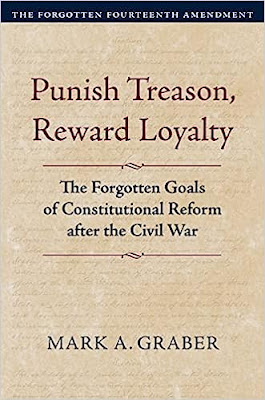
Mark A. Graber, Punish Treason, Reward Loyalty: The Forgotten Goals of Constitutional Reform after the Civil War (University of Kansas Press, 2023)
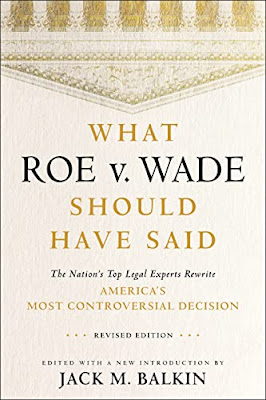
Jack M. Balkin, What Roe v. Wade Should Have Said: The Nation's Top Legal Experts Rewrite America's Most Controversial Decision - Revised Edition (NYU Press, 2023)

Andrew Koppelman, Burning Down the House: How Libertarian Philosophy Was Corrupted by Delusion and Greed (St. Martin’s Press, 2022)

Gerard N. Magliocca, Washington's Heir: The Life of Justice Bushrod Washington (Oxford University Press, 2022)
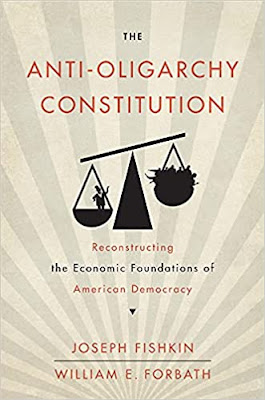
Joseph Fishkin and William E. Forbath, The Anti-Oligarchy Constitution: Reconstructing the Economic Foundations of American Democracy (Harvard University Press, 2022)
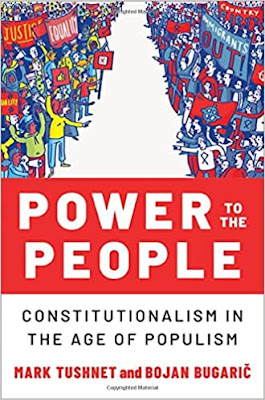
Mark Tushnet and Bojan Bugaric, Power to the People: Constitutionalism in the Age of Populism (Oxford University Press 2021).

Mark Philip Bradley and Mary L. Dudziak, eds., Making the Forever War: Marilyn B. Young on the Culture and Politics of American Militarism Culture and Politics in the Cold War and Beyond (University of Massachusetts Press, 2021).

Jack M. Balkin, What Obergefell v. Hodges Should Have Said: The Nation's Top Legal Experts Rewrite America's Same-Sex Marriage Decision (Yale University Press, 2020)

Frank Pasquale, New Laws of Robotics: Defending Human Expertise in the Age of AI (Belknap Press, 2020)

Jack M. Balkin, The Cycles of Constitutional Time (Oxford University Press, 2020)

Mark Tushnet, Taking Back the Constitution: Activist Judges and the Next Age of American Law (Yale University Press 2020).

Andrew Koppelman, Gay Rights vs. Religious Liberty?: The Unnecessary Conflict (Oxford University Press, 2020)

Ezekiel J Emanuel and Abbe R. Gluck, The Trillion Dollar Revolution: How the Affordable Care Act Transformed Politics, Law, and Health Care in America (PublicAffairs, 2020)

Linda C. McClain, Who's the Bigot?: Learning from Conflicts over Marriage and Civil Rights Law (Oxford University Press, 2020)
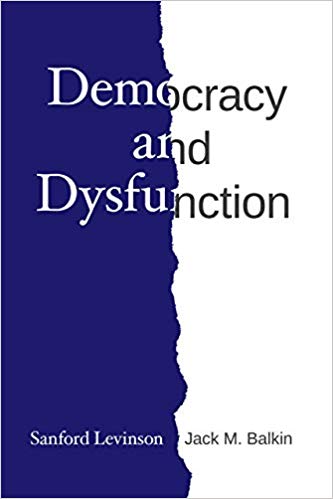
Sanford Levinson and Jack M. Balkin, Democracy and Dysfunction (University of Chicago Press, 2019)

Sanford Levinson, Written in Stone: Public Monuments in Changing Societies (Duke University Press 2018)

Mark A. Graber, Sanford Levinson, and Mark Tushnet, eds., Constitutional Democracy in Crisis? (Oxford University Press 2018)

Gerard Magliocca, The Heart of the Constitution: How the Bill of Rights became the Bill of Rights (Oxford University Press, 2018)

Cynthia Levinson and Sanford Levinson, Fault Lines in the Constitution: The Framers, Their Fights, and the Flaws that Affect Us Today (Peachtree Publishers, 2017)

Brian Z. Tamanaha, A Realistic Theory of Law (Cambridge University Press 2017)

Sanford Levinson, Nullification and Secession in Modern Constitutional Thought (University Press of Kansas 2016)

Sanford Levinson, An Argument Open to All: Reading The Federalist in the 21st Century (Yale University Press 2015)

Stephen M. Griffin, Broken Trust: Dysfunctional Government and Constitutional Reform (University Press of Kansas, 2015)

Frank Pasquale, The Black Box Society: The Secret Algorithms That Control Money and Information (Harvard University Press, 2015)

Bruce Ackerman, We the People, Volume 3: The Civil Rights Revolution (Harvard University Press, 2014)
Balkinization Symposium on We the People, Volume 3: The Civil Rights Revolution

Joseph Fishkin, Bottlenecks: A New Theory of Equal Opportunity (Oxford University Press, 2014)

Mark A. Graber, A New Introduction to American Constitutionalism (Oxford University Press, 2013)

John Mikhail, Elements of Moral Cognition: Rawls' Linguistic Analogy and the Cognitive Science of Moral and Legal Judgment (Cambridge University Press, 2013)

Gerard N. Magliocca, American Founding Son: John Bingham and the Invention of the Fourteenth Amendment (New York University Press, 2013)

Stephen M. Griffin, Long Wars and the Constitution (Harvard University Press, 2013)

Andrew Koppelman, The Tough Luck Constitution and the Assault on Health Care Reform (Oxford University Press, 2013)

James E. Fleming and Linda C. McClain, Ordered Liberty: Rights, Responsibilities, and Virtues (Harvard University Press, 2013)
Balkinization Symposium on Ordered Liberty: Rights, Responsibilities, and Virtues

Andrew Koppelman, Defending American Religious Neutrality (Harvard University Press, 2013)

Brian Z. Tamanaha, Failing Law Schools (University of Chicago Press, 2012)

Sanford Levinson, Framed: America's 51 Constitutions and the Crisis of Governance (Oxford University Press, 2012)

Linda C. McClain and Joanna L. Grossman, Gender Equality: Dimensions of Women's Equal Citizenship (Cambridge University Press, 2012)

Mary Dudziak, War Time: An Idea, Its History, Its Consequences (Oxford University Press, 2012)

Jack M. Balkin, Living Originalism (Harvard University Press, 2011)

Jason Mazzone, Copyfraud and Other Abuses of Intellectual Property Law (Stanford University Press, 2011)

Richard W. Garnett and Andrew Koppelman, First Amendment Stories, (Foundation Press 2011)

Jack M. Balkin, Constitutional Redemption: Political Faith in an Unjust World (Harvard University Press, 2011)

Gerard Magliocca, The Tragedy of William Jennings Bryan: Constitutional Law and the Politics of Backlash (Yale University Press, 2011)

Bernard Harcourt, The Illusion of Free Markets: Punishment and the Myth of Natural Order (Harvard University Press, 2010)

Bruce Ackerman, The Decline and Fall of the American Republic (Harvard University Press, 2010)
Balkinization Symposium on The Decline and Fall of the American Republic

Ian Ayres. Carrots and Sticks: Unlock the Power of Incentives to Get Things Done (Bantam Books, 2010)

Mark Tushnet, Why the Constitution Matters (Yale University Press 2010)
Ian Ayres and Barry Nalebuff: Lifecycle Investing: A New, Safe, and Audacious Way to Improve the Performance of Your Retirement Portfolio (Basic Books, 2010)
.jpg)
Jack M. Balkin, The Laws of Change: I Ching and the Philosophy of Life (2d Edition, Sybil Creek Press 2009)

Brian Z. Tamanaha, Beyond the Formalist-Realist Divide: The Role of Politics in Judging (Princeton University Press 2009)
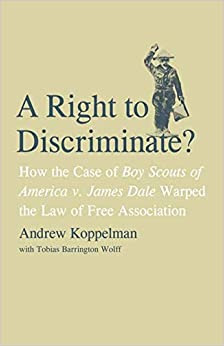
Andrew Koppelman and Tobias Barrington Wolff, A Right to Discriminate?: How the Case of Boy Scouts of America v. James Dale Warped the Law of Free Association (Yale University Press 2009)

Jack M. Balkin and Reva B. Siegel, The Constitution in 2020 (Oxford University Press 2009)
Heather K. Gerken, The Democracy Index: Why Our Election System Is Failing and How to Fix It (Princeton University Press 2009)

Mary Dudziak, Exporting American Dreams: Thurgood Marshall's African Journey (Oxford University Press 2008)

David Luban, Legal Ethics and Human Dignity (Cambridge Univ. Press 2007)

Ian Ayres, Super Crunchers: Why Thinking-By-Numbers is the New Way to be Smart (Bantam 2007)

Jack M. Balkin, James Grimmelmann, Eddan Katz, Nimrod Kozlovski, Shlomit Wagman and Tal Zarsky, eds., Cybercrime: Digital Cops in a Networked Environment (N.Y.U. Press 2007)
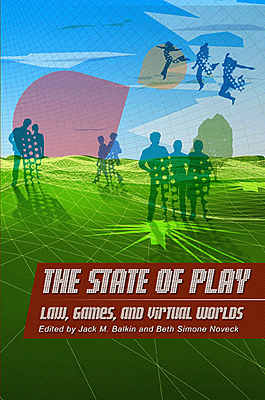
Jack M. Balkin and Beth Simone Noveck, The State of Play: Law, Games, and Virtual Worlds (N.Y.U. Press 2006)

Andrew Koppelman, Same Sex, Different States: When Same-Sex Marriages Cross State Lines (Yale University Press 2006)
Brian Tamanaha, Law as a Means to an End (Cambridge University Press 2006)
Sanford Levinson, Our Undemocratic Constitution (Oxford University Press 2006)
Mark Graber, Dred Scott and the Problem of Constitutional Evil (Cambridge University Press 2006)
Jack M. Balkin, ed., What Roe v. Wade Should Have Said (N.Y.U. Press 2005)
Sanford Levinson, ed., Torture: A Collection (Oxford University Press 2004)
Balkin.com homepage
Bibliography
Conlaw.net
Cultural Software
Writings
Opeds
The Information Society Project
BrownvBoard.com
Useful Links
Syllabi and Exams